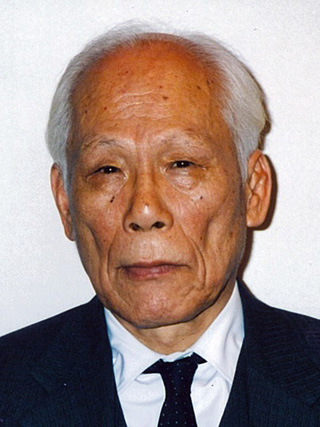Chushiro Hayashi
Japanese astrophysicist (1920–2010) From Wikipedia, the free encyclopedia
Chushiro Hayashi (林 忠四郎, Hayashi Chūshirō, July 25, 1920 – February 28, 2010) was a Japanese astrophysicist. Hayashi tracks on the Hertzsprung–Russell diagram are named after him.
Chūshirō Hayashi | |
|---|---|
 | |
| Born | July 25, 1920 Kyoto, Japan |
| Died | February 28, 2010 (aged 89) Kyoto, Japan |
| Nationality | Japanese |
| Alma mater | University of Tokyo |
| Awards | Eddington Medal in 1970 Kyoto Prize in 1995 Bruce Medal in 2004 |
| Scientific career | |
| Fields | astrophysics |
| Institutions | Kyoto University |
| Doctoral advisor | Hideki Yukawa |
| Doctoral students | Katsuhiko Sato |
Hayashi was born in Kyoto and enrolled at the Imperial University of Tokyo in 1940, earning his BSc in Physics after 2½ years, in 1942. He was conscripted into the navy[1] and, after the war ended, joined the group of Hideki Yukawa at Kyoto University. He was appointed a professor at Kyoto University in 1957.[1]
He made additions to the Big Bang nucleosynthesis model that built upon the work of the classic Alpher–Bethe–Gamow paper.[2] Probably his most famous work was the astrophysical calculations that led to the Hayashi tracks of star formation,[3] and the Hayashi limit that puts a limit on star radius. He was also involved in the early study of brown dwarfs, some of the smallest stars formed.[4]
He retired in 1984 and died from pneumonia at a Kyoto hospital on February 28, 2010.[5][6]
Awards and honours
- 1965 Asahi Prize
- 1970 Eddington Medal
- 1971 Imperial Prize of the Japan Academy[7]
- 1994 Order of the Sacred Treasure, First Class[1]
- 1995 Kyoto Prize
- 2004 Bruce Medal
- Asteroid 12141 Chushayashi is named after him.
References
External links
Wikiwand - on
Seamless Wikipedia browsing. On steroids.
